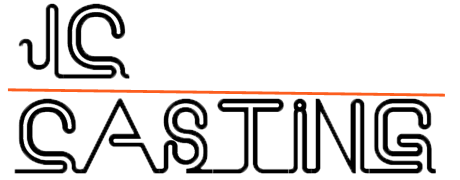What Is Cast Iron?
Cast iron is an iron-carbon alloy containing more than 2 wt.% carbon. It’s one of the oldest ferrous alloys used in building and outdoor sculptures. It is harder, more brittle, non-malleable, and fusible than steel.
Depending on the material’s composition, properties vary somewhat. White cast iron, malleable cast iron, ferritic malleable cast iron, grey cast iron, and ductile iron are all types of cast iron.
What is Cast Steel?
A carbon iron alloy containing less than 2% of carbon by weight is known as cast steel. This material is created by heating iron in a crucible container and includes carbon. It also include other metallic elements including manganese, copper, aluminum, silicon, or chromium. The addition of these elements is intended to enhance physical and mechanical qualities. Added to its corrosion resistance. Furthermore, cobalt, columbium, molybdenum, nickel, titanium, tungsten, vanadium, zirconium, and other elements are used to achieve desired alloy properties.
The Advantages And Disadvantages Of Cast Iron
There are many types of cast irons. Each with its own set of advantages derived from its distinct characteristics. They’re utilized depending on the sort of purpose. The following are some benefits associated with several kinds of cast iron.
- It has a high strength to weight ratio, excellent casting characteristics, vibration damping and wear resistance, machinability and low notch sensitivity.
- Cast iron is a highly versatile metal with excellent strength, ductility, heat resistance, and toughness. In some cases, they’re utilized in place of carbon steel.
However, the disadvantage with cast iron is the expense of producing these materials is rather high. The procedure is time-consuming and necessitates sophisticated equipment.
The Advantages And Disadvantages Of Cast Steel
The pros and cons of cast iron vs. cast steel are numerous, as is the case with all materials. They should be chosen based on the requirements of the application and their physical characteristics.
Cast Steel is malleable. It’s easy to make complicated shapes and hollow cross-sections with steel. This also allows for different materials, as well as heat treatment choices. In addition to other characteristics, it has good weldability and workability.
The disadvantages of cast steel, on the other hand, tend to be more expensive than those of cast iron. It has drawbacks such as poor shake-suction, low wear resistance, mobility, and casting durability.
Cast Iron vs Cast Steel
The main distinctions between cast iron and cast steel \are summarized in this table.
| CAST STEEL | CAST IRON |
| Cast Steel is less flowable and more brittle than Cast Iron. | Corrosion resistance and resistance to mechanical wear, cast iron is superior. |
| Ductile in nature. | Cast iron is less expensive. |
| Better in machinability. | The qualities of cast iron for damping vibrations are excellent. |
| Better in Weldability | More of Brittle Nature. |
| The melting temperature of steel is much higher than that of stainless steel. | Lower Machinability |
| In addition, there are numerous alloying elements in cast steel. | It’s melting point is low |
JC CASTING —- Cast Iron, Casting Steel Casting manufacturer
JC Casting stays at the forefront of the foundry industry to deliver the highest-quality custom castings, offering a wide variety of custom metal casting and fabrication sourcing services. We are a reliable and dependable manufacturer of your casting needs. Call us OR email us: info@jcccasting.com
